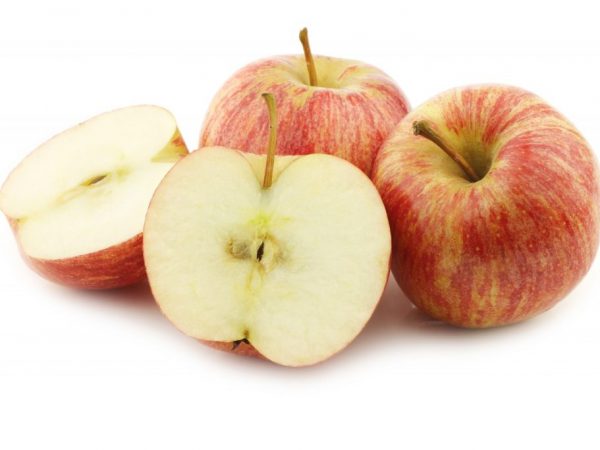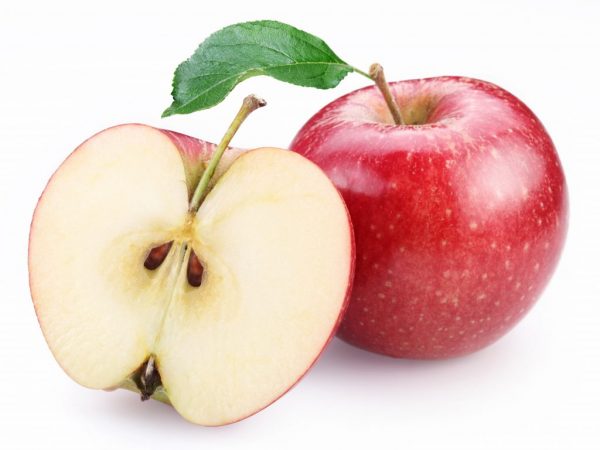Reasons for darkening apples on the cut
There are many different stories wandering about why an apple darkens on a cut, but some of them are just fiction, in which some believe out of ignorance of the true reasons. Let's consider all the answers to this question and come to a logical conclusion.

Reasons for darkening apples on the cut
Major myths and misconceptions
As a rule, most often people believe that the apple darkens on the cut due to the high content of iron in it.
The rationale for this is that when the peel is cut or the fruit is cut into pieces, the iron molecules simply rust and therefore the pulp quickly changes its natural color.
Also, many people cite the following argument as proof: if you grease the apple pulp with lemon juice, then it does not deteriorate its color at all. And all because ascorbic acid binds iron ions and does not allow a rusty tint to appear.
Of course, the version is convincing and very similar to the truth, but this is a common misconception.
Let's finally find out what really happens with the cut apples.
Real reasons
All varieties of apples do have iron in their composition. Inside one fruit weighing about 150 g, there is about 3-4 g of iron.
But this amount of the substance is not enough to affect the color of the pulp. The real reason is completely different.
After damage to the integrity of the fruit, a whole chain of chemical processes occurs, which are the true reasons for its darkening. If you trace the entire cycle of changes, you can understand what exactly leads to this.
As you know, fruits are rich in antioxidants. Chemists classify them as a group of polyphenols with different names, but the common essence is the compounds of various phenols. In addition to colorless polyphenols, the pulp contains substances such as polyphenol oxidases.
After cutting, oxygen penetrates into the integral structure, because of this, the polyphenol oxidase enzymes begin to actively interact with polyphenols.

When an apple interacts with oxygen, a chemical reaction begins.
At the end of the interaction, a new component appears - quinone, which is the strong oxidizing agent that leads to darkening.
It turns out that this phenomenon is a kind of protective mechanism.
First, the fruit tries to protect itself from pests, for example, caterpillars that love to settle inside. Quinone is very toxic for them, as well as for some types of fungi. In addition, eating the darkened pulp disrupts caterpillar digestion.
Secondly, oxidation leads to the formation of a protective film that prevents damage to grow in breadth and inward.
Why do some apples darken faster?
The reaction rate is influenced by the variety and temperature conditions.
- In cold air or in the refrigerator, bitten apples darken only after 5-10 hours, and in a hot oven or slow cooker they become dark in a few minutes.
- Sour varieties change color much faster than sweet ones.This fact is explained by the fact that there are fewer oxidase enzymes in sweet fruits.
How to prevent darkening
Of course, the property of almost all apples to change color after breaking their integrity is not to many people 's taste - brownish fruits lose their appetizing appearance, especially if you need to prepare a festive cut on the table.
Let's take a look at some simple ways to help keep apples looking juicy.
- Vitamin C, which is found in the juice of any citrus fruit, will come to the rescue. It neutralizes the interaction of enzymes with oxygen in the air. It is enough to lubricate the cut with lemon or orange juice and it will not turn black. It is worth remembering that juiced fruits will be slightly sour.
- Citric acid can be used in place of citrus juice. A small amount of the substance must be diluted in cold water, cut the fruit and place the slices in the solution for 5-6 minutes.
- Sugar syrup can also help prevent discoloration. If you put a wedge in syrup for a few seconds, it will not darken, but it will taste even sweeter.
- You can sprinkle the cut with sweet soda water, which contains citric acid and sugar.
- If you need to take a cut apple with you, for example, on a trip or to school, then this method is suitable: the fruit is cut into 2 halves, the core is carefully removed, the halves are folded together and pulled together with one or two rubber bands. Then the fruit must be packed in a bag. Oxygen will not be able to get on the cut part, and it will remain light.
Eating slightly browned fruits is completely harmless to human health. Such apples can be safely eaten. If the brownish tint of the pulp does not cause appetite, you can first cut off the spoiled part.

